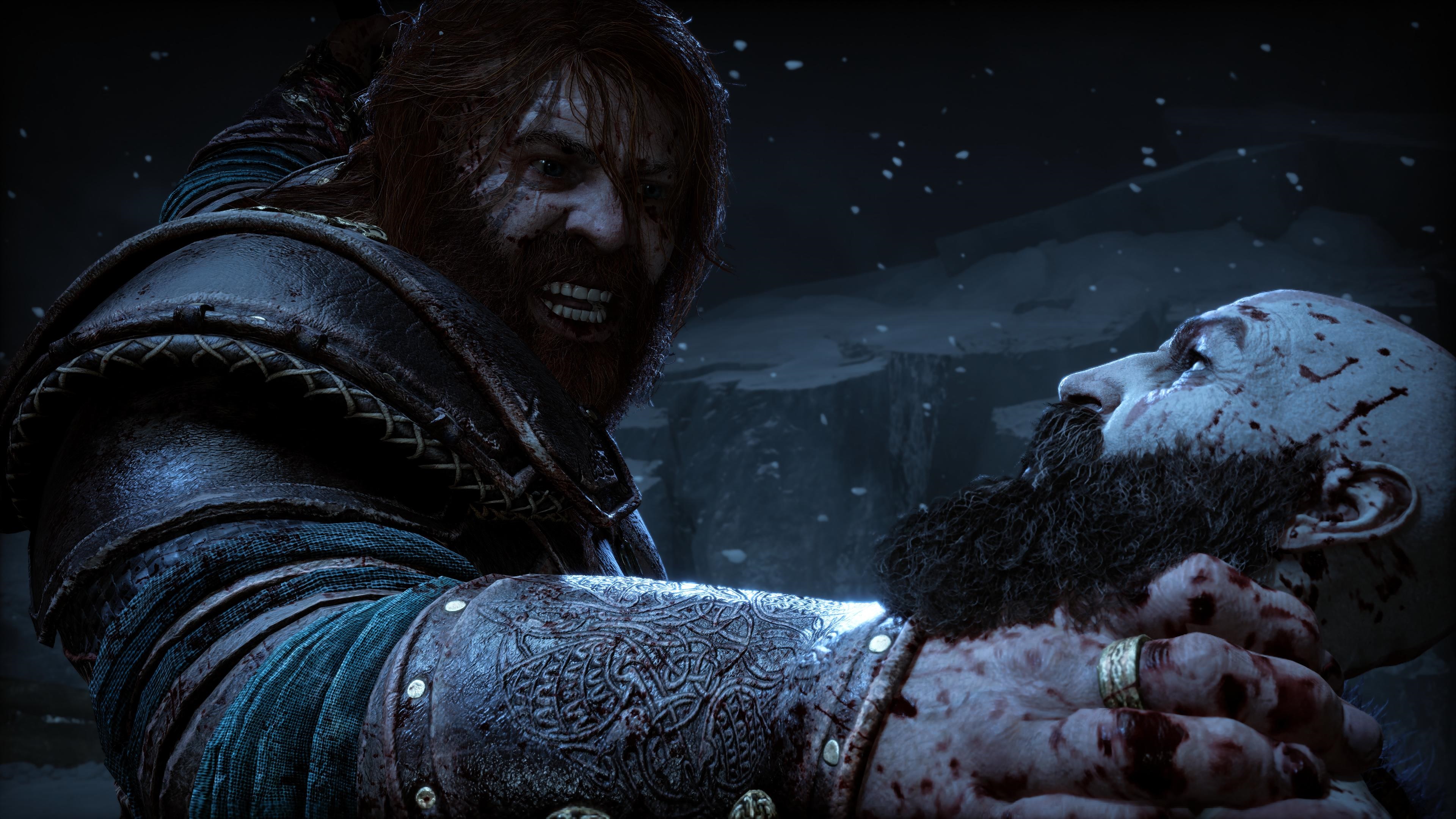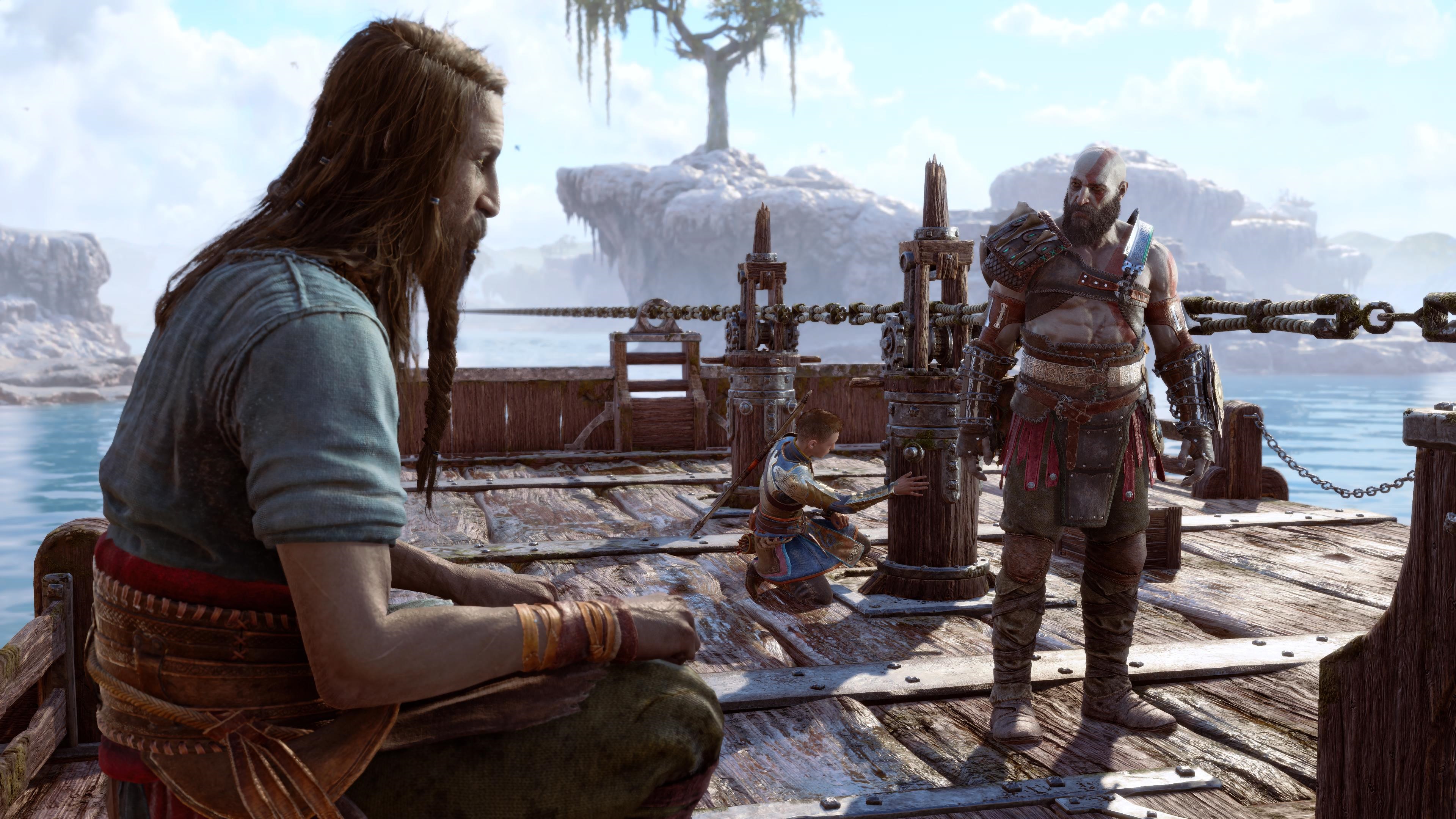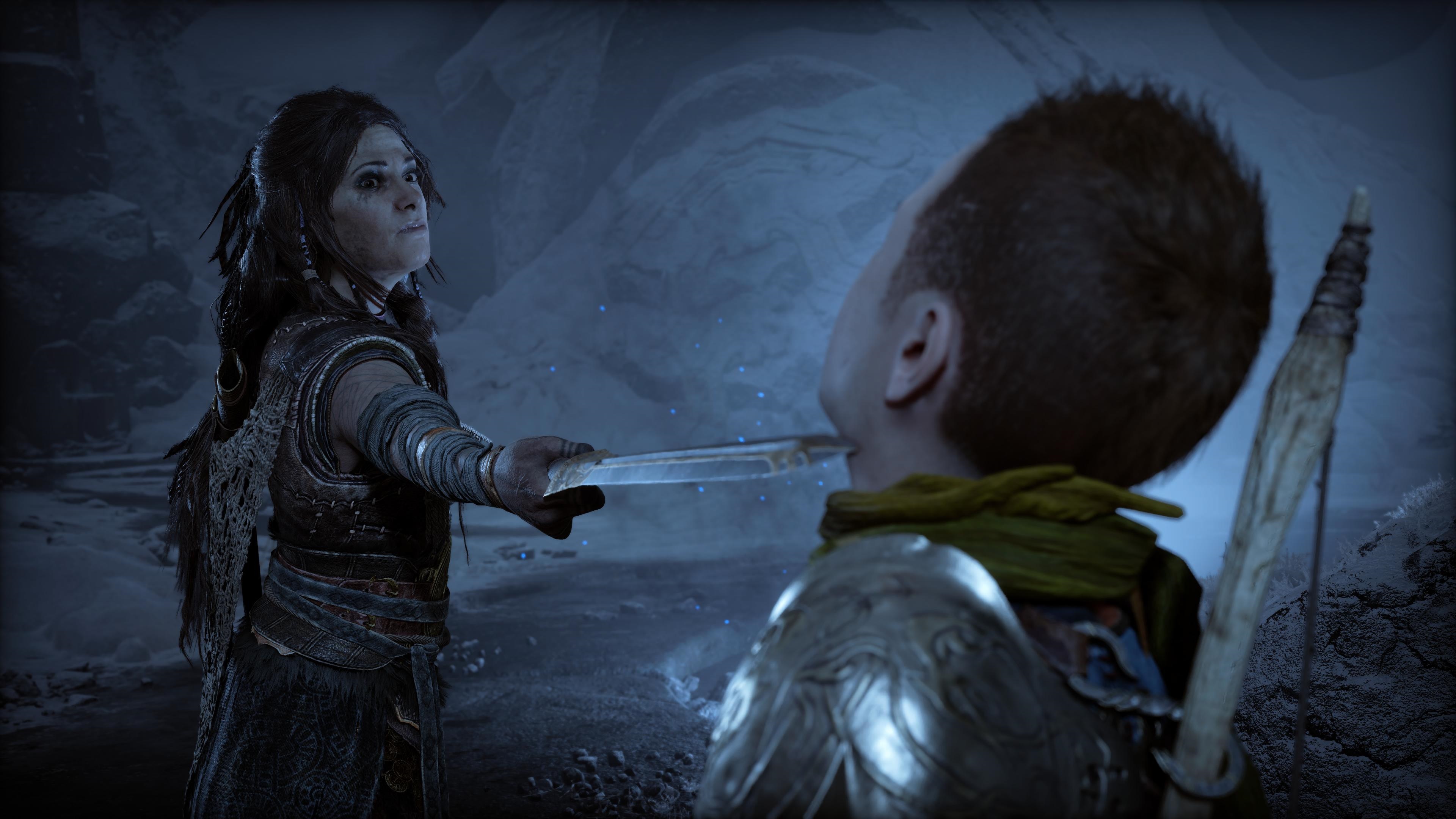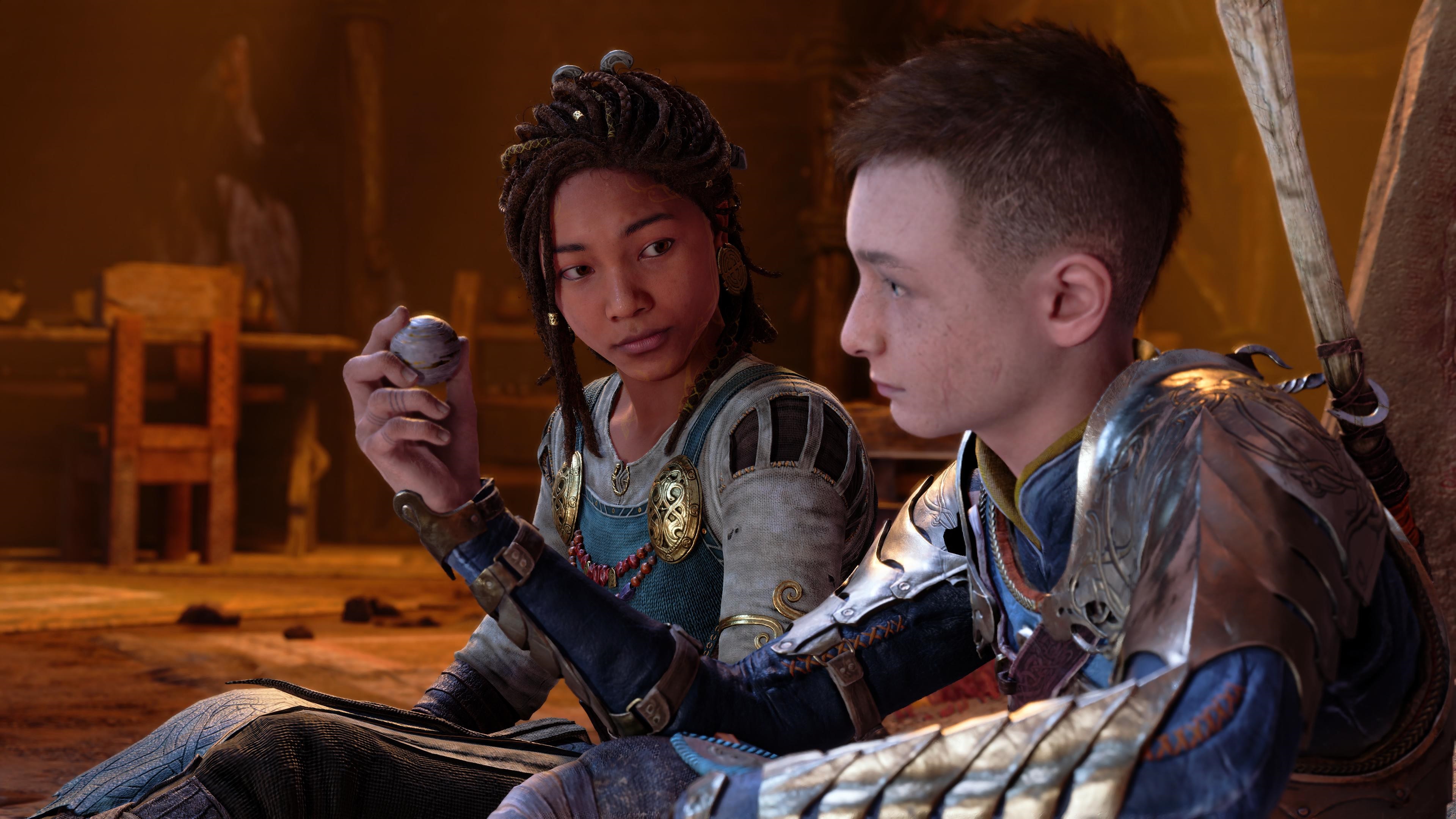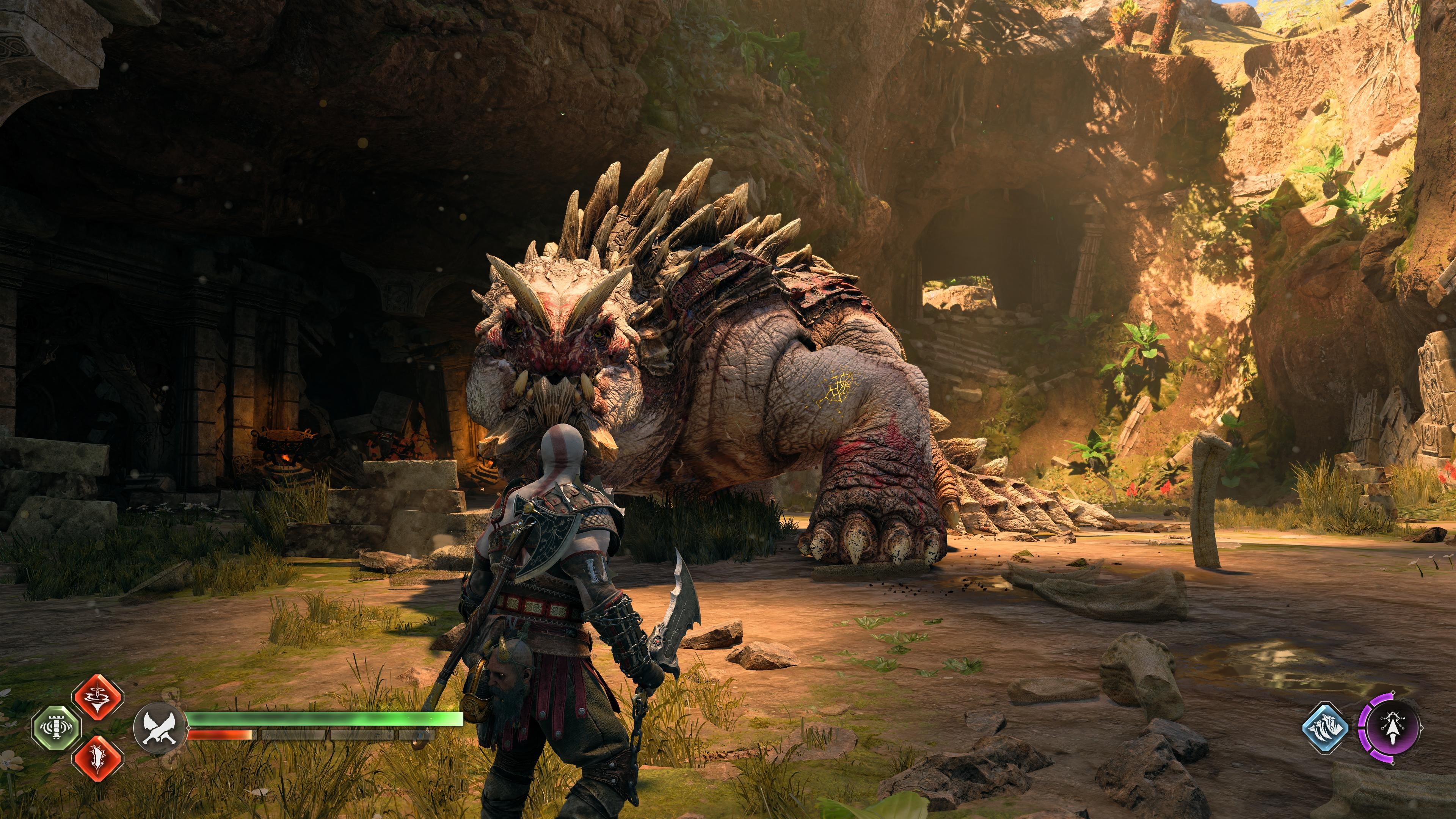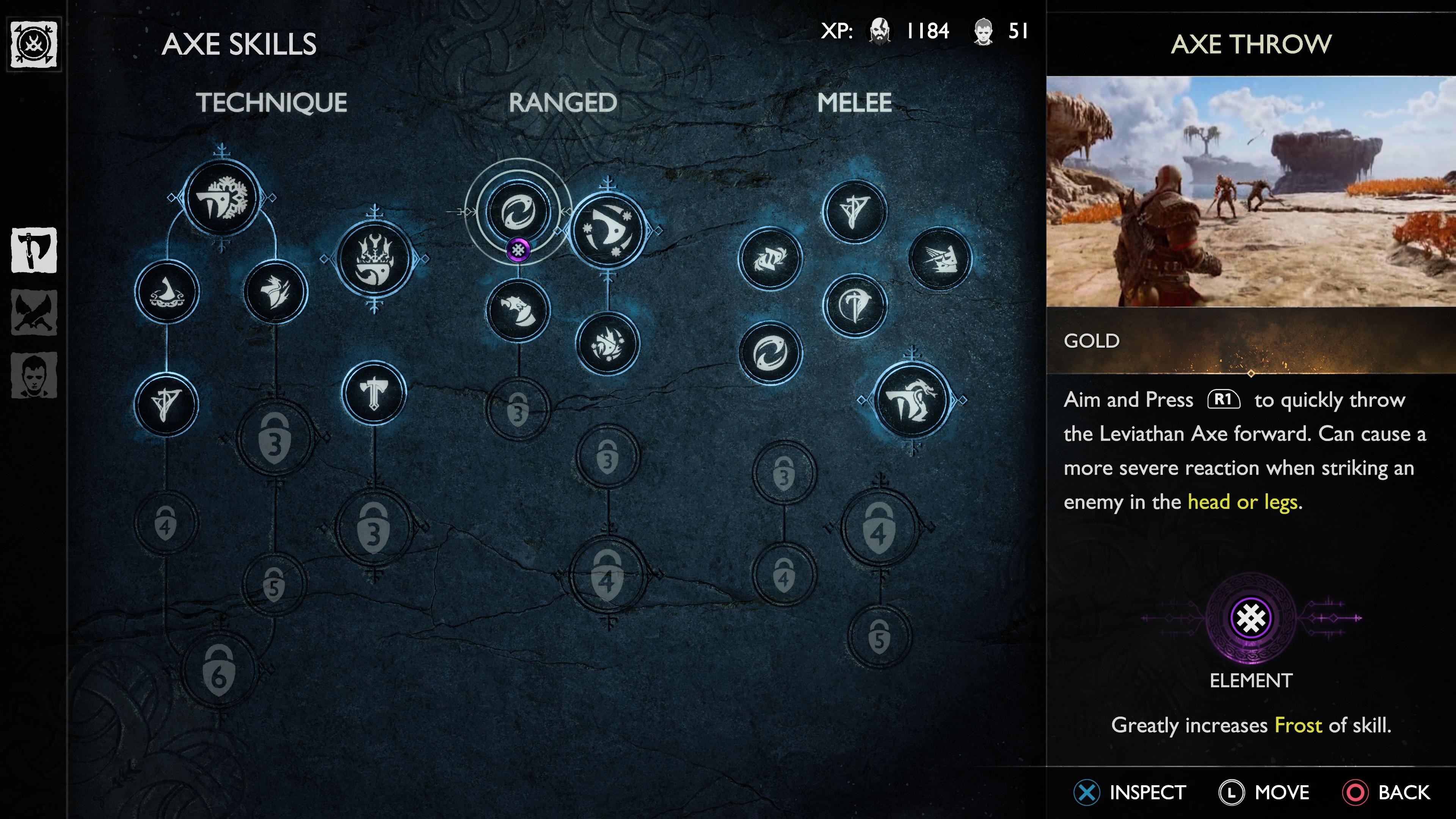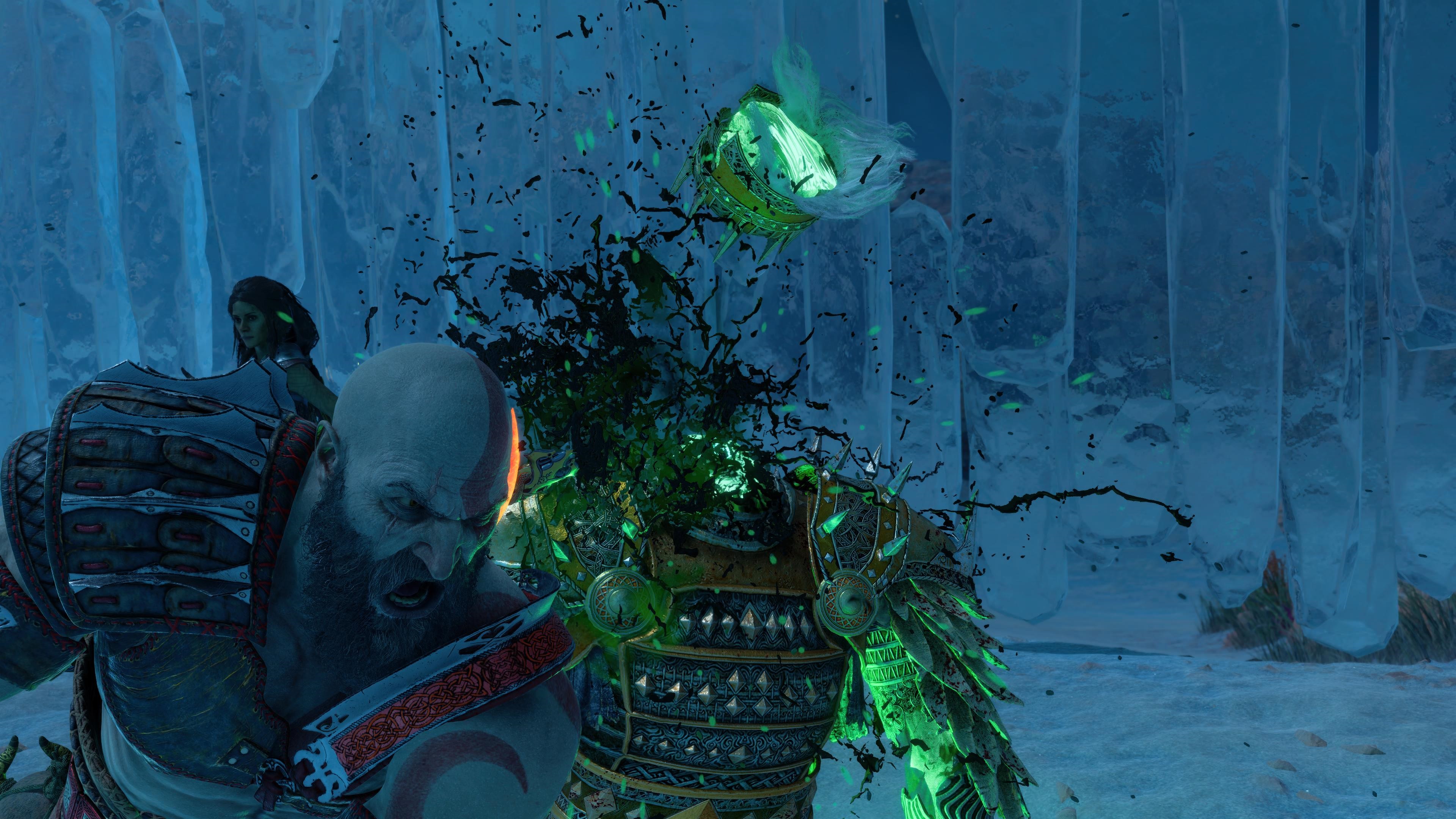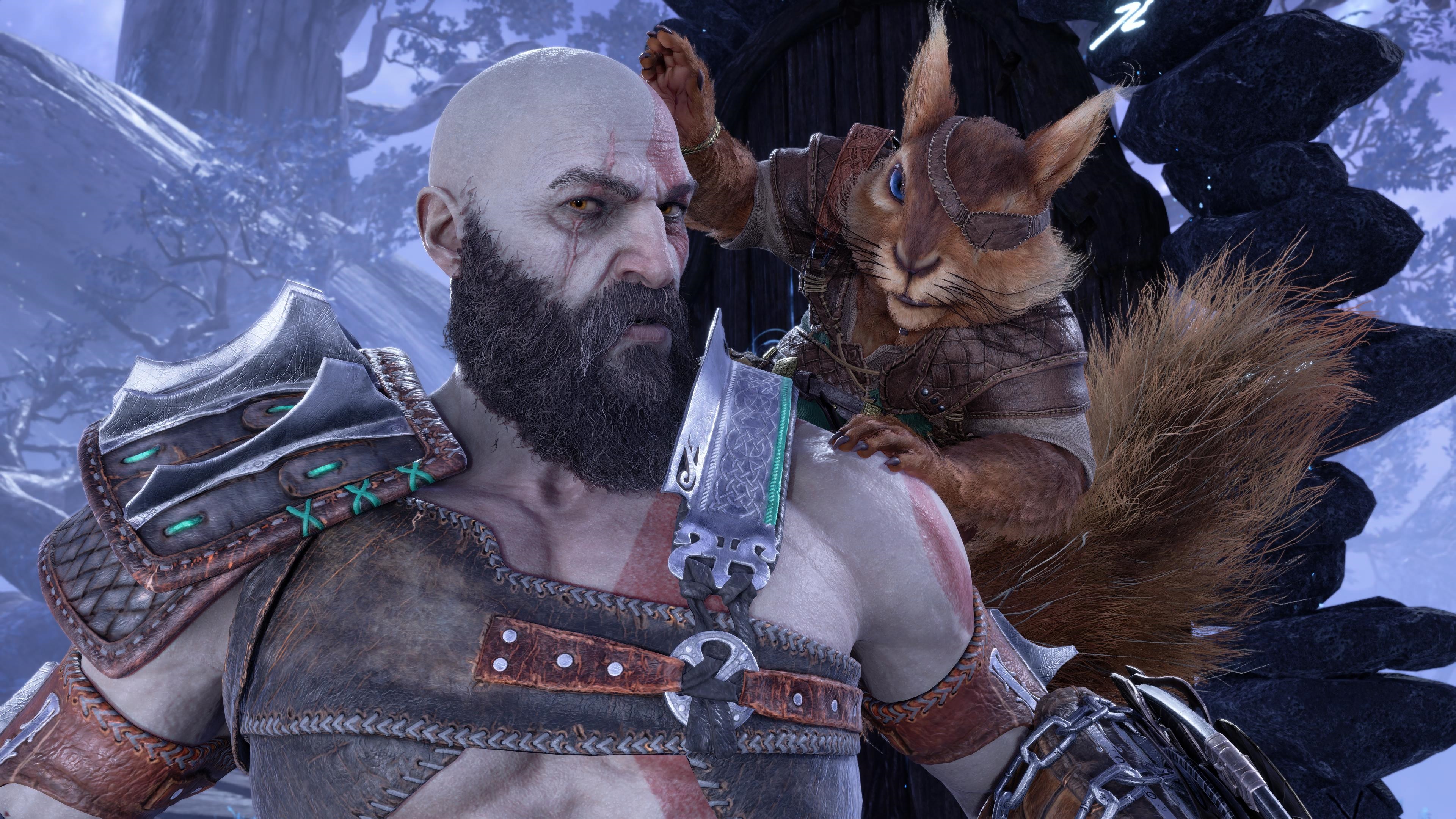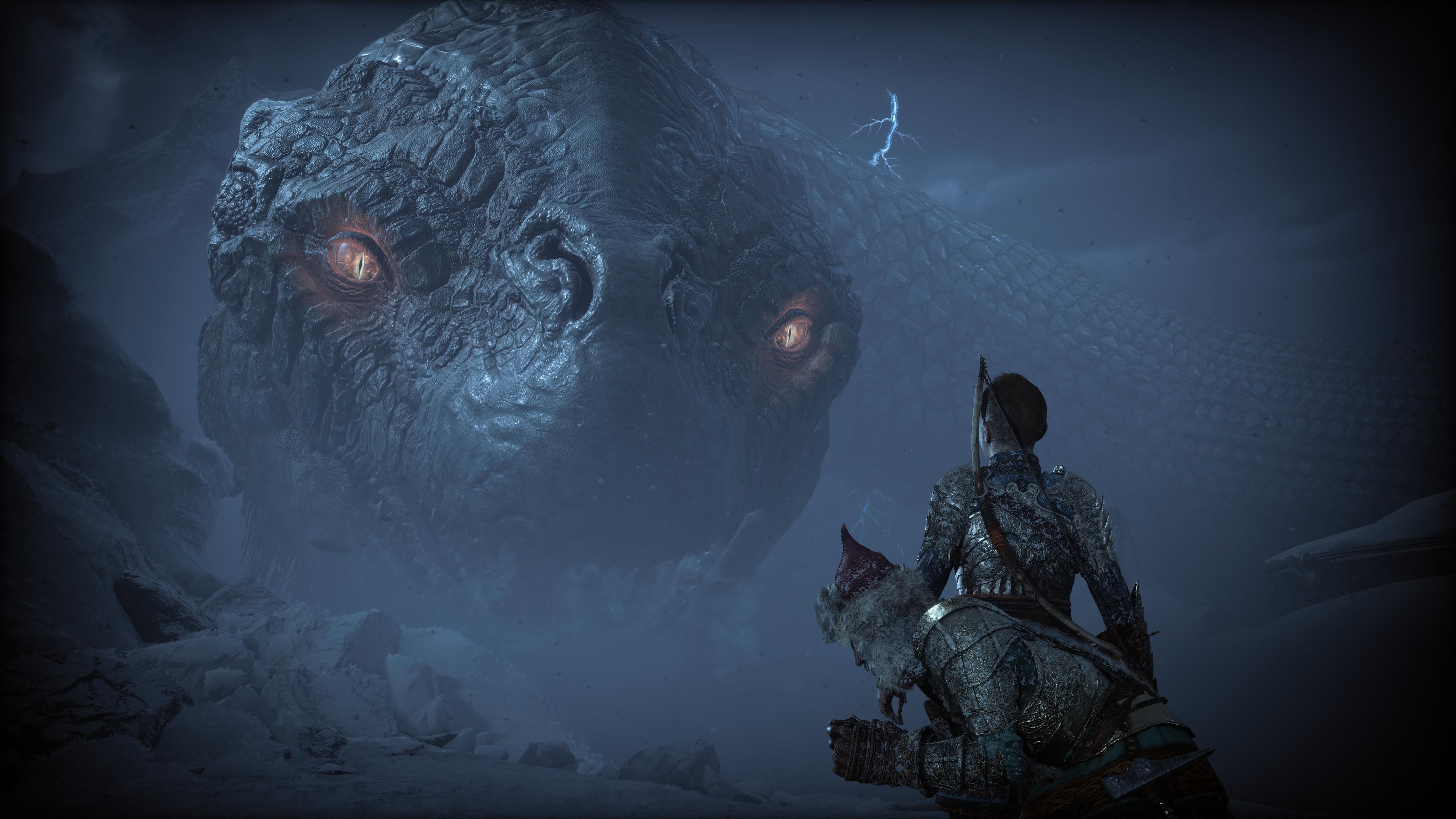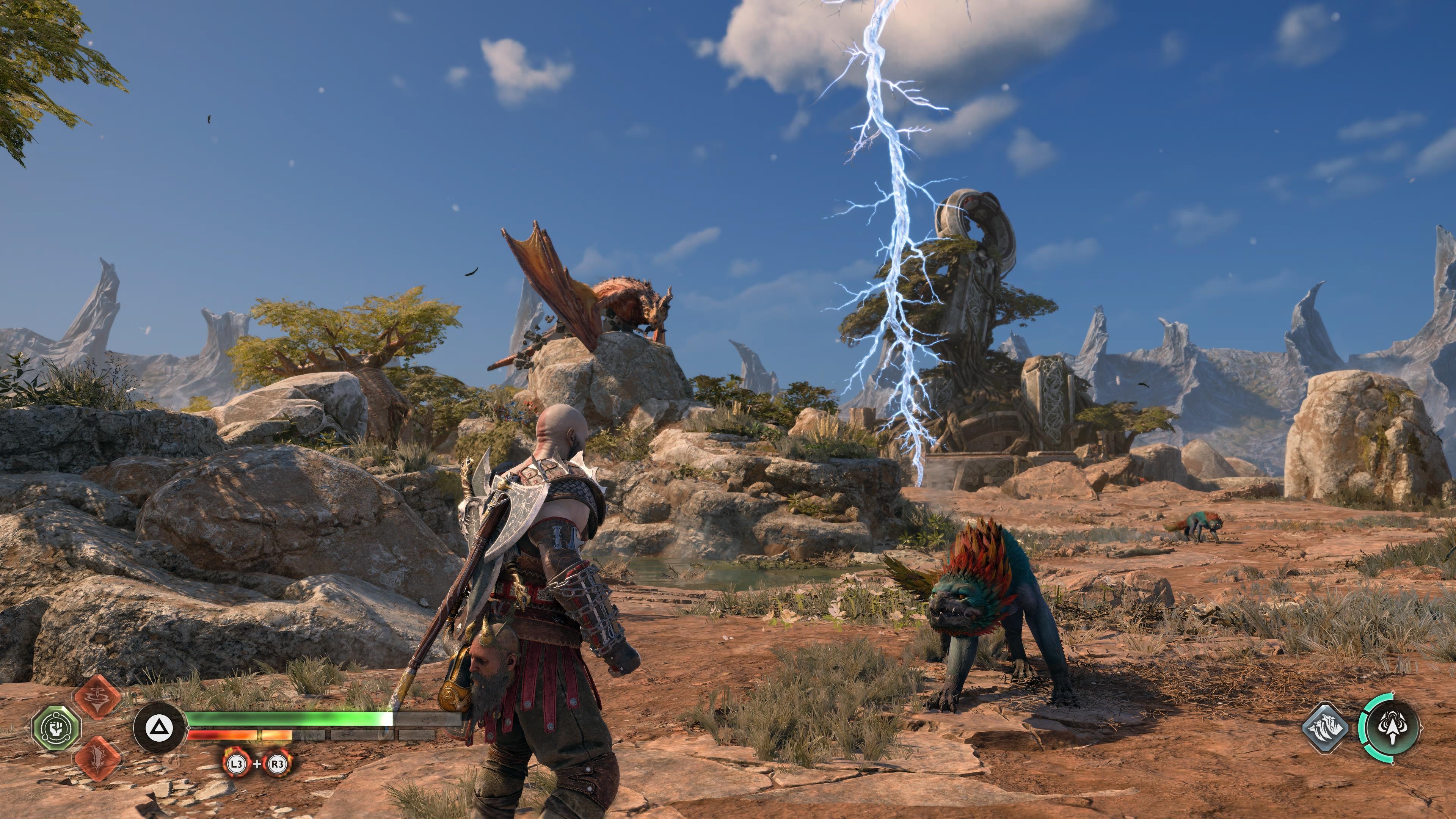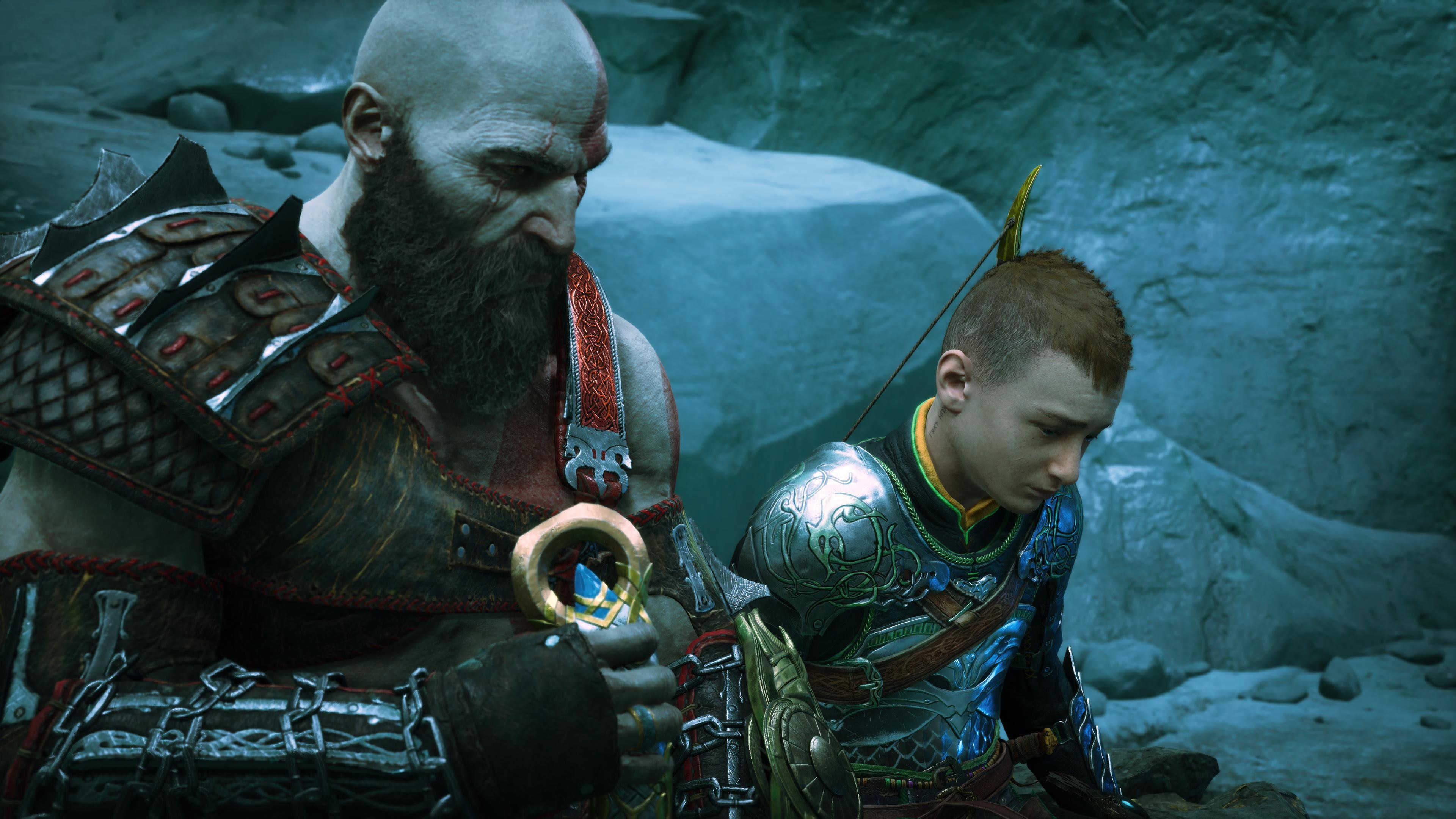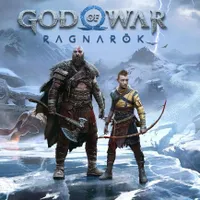Android Central Verdict
Pros
- +
Excellent combat and exploration systems
- +
Compelling, well-performed characters
- +
Gorgeous visual design
- +
Variety of accessibility options
Cons
- -
Rough pacing, especially in the first half
- -
Doesn't fully deliver on story set up in predecessor
Why you can trust Android Central
With God of War (2018), developer Sony Santa Monica reinvented itself. That soft reboot altered how players would perceive Kratos, a grizzled old god of war, now father to a young boy named Atreus. Their story took them through multiple realms as they finally managed to scatter the ashes of Faye, Kratos' late wife, but not before killing three gods — Baldur, Magni, and Modi — and attracting the ire of Asgard while also accidentally set the end of all things in motion.
Now, in God of War Ragnarök, the consequences of every choice are poised to come to fruition. It's a meaty game, one that ambitiously tries to improve on what worked well in the prior title and address feedback for what didn't, all while bringing an end to the Norse chapter of God of War's storyline. It achieves much of this, but not all of it.
Much like Thor in the tale of his feats and exploits in the hall of Utgard-Loki, God of War Ragnarök buckles — but does not collapse — under the weight of its own ambition. The pacing is noticeably worse than in the previous game, and multiple interesting plot points from God of War (2018) are only briefly addressed or are abandoned altogether as the story is forced to reach its climax.
Fortunately, these are the only big issues and they're outweighed by what this game gets right. Ultimately, I'm happy to say that without any doubt it is one of the best PS5 games of the year, offering better enemy and (especially) boss variety when compared to its predecessor, all while delivering gorgeous visuals and stellar performances.
Disclaimer: This review was made possible by a review code provided by PlayStation. The company did not see the contents of the review before publishing.
God of War Ragnarök: Story and Characters
In God of War Ragnarök, we pick up three years after the events of the last game, as Kratos and Atreus are working to survive the cold of Fimbulwinter. Father and son have grown closer, but there are still secrets being held on both sides, as Atreus is going behind his father's back to find out the answers to several questions. Does Ragnarök truly mean the end of the world? What if Tyr — the Norse God of War, said in the previous game to be slain by Odin — is still alive and can help? And why did the giants refer to Atreus as 'Loki' in their prophetic murals?
Meanwhile, Freya, the mother of Baldur, is seeking revenge, as is Thor, father of Magni and Modi. Above all are the plots and machinations of Odin, the yet-unseen All-Father, who values knowledge and secrets more than anything. When all of these issues explode, Kratos and Atreus are sent racing across the Nine Realms to try and figure out what can be done to prevent the end of reality.
Get the latest news from Android Central, your trusted companion in the world of Android
| Category | Header Cell - Column 1 |
|---|---|
| Title | God of War Ragnarök |
| Developer | Sony Santa Monica |
| Publisher | PlayStation Studios |
| Genre | Action/Adventure |
| PlayStation Version | PlayStation 5 |
| Game Size | 84 GB |
| Play Time | 40 hours |
| Players | Single-player |
| PlayStation Plus Premium | No |
| Launch Price | $70 |
Straight away, it's worth mentioning that practically everyone here turns in excellent work, with the performance actors doing a fantastic job to convey the heartbreak, schemes, grief, love, and hatred that unfolds across the story. Christopher Judge and Sunny Suljic return as Kratos and Atreus respectively, and the dynamic between these two continues to form a compelling foundation for the narrative. Danielle Bisutti returns as a vengeful Freya, while newcomers Ben Prendergast, Ryan Hurst, and Richard Schiff take up the roles of Tyr, Thor, and Odin, respectively.
Kratos and Atreus' relationship was the highlight of God of War (2018) and it should be no surprise that this continues to be the case here. Both are far from perfect, but they are trying to be closer, and the difficulties they have in trusting one another — even as they want to understand each other's suffering — never stops being riveting.
Highlighting Freya, her story of grief, love, and hatred is by far some of the most moving material in the franchise to date, a sensitive balance that could've easily backfired if it wasn't carefully written and performed heartbreakingly well. Ben Prendergast as Tyr is interesting and he serves as a unique foil, a God of War who fought through words and a desire for peace.
Ryan Hurst impresses as the bloodthirsty Thor, as he's essentially shaped to be Kratos' Norse counterpart, though there's more to him than meets the eye. Richard Schiff's Odin is deceptively good, addressing the people he talks to in such a calm manner his ultimate goals are impossible to determine, even as he clearly hungers for knowledge.
While almost every scene is acted immensely well, this game, unfortunately, lacks the stellar pacing of its predecessor. Part of this is due to how the game is structured, lacking one major central region like Midgard, but it's primarily because of how the story unfolds. Sony Santa Monica was very open pre-launch about wanting to not take several more years to finish this story, which results in an expeditious and ambitious game, as a lot has to happen just to set up the main plots.
The result is that, unfortunately, the pacing directly suffers. God of War (2018) was remarkable for its practically perfect pacing, and that isn't the case here. In the first half of the game, you're often locked into extremely long segments key to the main path, and while they are usually interesting, it means there are very long stretches of time where you can't really explore or even look for resources to upgrade your equipment.
Things smooth out a little in the second half as more of the Nine Realms opens up and you're afforded more opportunities to explore, but this is where another issue rears its head: Finishing the story.
In the first-ever full trailer for this game, the young Jotun Angrboda says that "You'll get your answers soon enough. Well, some of them." In hindsight, particular emphasis should be placed on the latter part of her comment. One of the many interesting aspects of God of War (2018) was how it set up several different mysteries and plot threads. That's continued at the beginning of Ragnarök, but as the game enters its second half, only a minority of those mysteries ever pan out in a meaningful way.
I don't think the developers needed to answer every single thing, but considering that this game is the middle and end of a chapter in God of War that's called "Ragnarök," I'm genuinely surprised at how many things just aren't addressed. The ending of the game rushes through different events or abandons them altogether, and it really feels like the story had to be crushed down in order to make it all fit. That's a shame because those parts that did make the cut are quite interesting.
God of War Ragnarök, ultimately, is a game about fate. What does prophecy mean for your life, and what do you do if you know what is supposed to happen? It tackles this topic differently for each character, in a way that feels true to different interpretations of Norse myth, even at the expense of other interesting topics.
God of War Ragnarök: Gameplay and Customization
When it comes to playing the game, God of War Ragnarök is essentially its predecessor, but bigger in every way. As this is a third-person action-adventure game, players again use a variety of weapons like the Leviathan Axe, Blades of Chaos, and Atreus' bow to cut down enemies and solve puzzles, with both father and son having access to special Runic attacks that can alter the flow of combat.
As you unlock skills for each of the different weapons and magic abilities to improve the fighting abilities of Kratos and his companions, some will have bonus challenges for using that particular skill a number of times. When this challenge is completed, you can further customize that skill, such as increasing the stun damage of an axe throw or having it deal extra Frost buildup.
It's a small change but one that helps further enhance the gameplay systems, as you'll naturally find yourself improving skills that you use regularly, instead of having to go out of your way of your playstyle to unlock a new feature.
Another nice change comes in the form of how you upgrade your gear. While it is broadly the same system — in exchange for your currency (Hacksilver) and various resources, a piece of armor or a weapon can be improved — you'll no longer be forced to switch gear because you've maxed out what a particular set is capable of.
Instead, every single piece of equipment can be upgraded to max rank, meaning different builds and setups are far more viable this time around. If you never want to abandon your starting armor set, you can carry all the way until the end.
There's another nice quality of life change here that seem small on paper but in practice, elevates the overall experience. Players can now grapple from a distance to leap across different kinds of platforms, as well as pull themselves up a large cliff, meaning that the overall pace of exploration on land feels much faster than in the previous game, so it's less of a hassle to revisit areas looking for collectibles or side quests.
This also lends a sense of verticality to many of the combat encounters, which means that you'll have to adjust how you approach a fight. Even fights that use the same enemies as before can feel radically different when you have to shift your focus between melee opponents on the ground and ranged attackers raining fire from above.
The boat returns as a primary method of travel between flooded regions, but it's accompanied by the sled. Pulled by two hounds native to the region in question — it's two wolves in Midgard — you'll be exploring larger areas with ease. Both the boat and the sled are a necessity, as while there's no one area as large as Midgard, multiple regions have been vastly expanded or are new altogether, meaning there's a lot to find even if you just stick to the main path.
Enemy executions return as a staple of the series, and there's a heightened emphasis on the brutality of the kills here. It still pales in comparison to the over-the-top violence of much older games like God of War 3, but things have definitely been taken up a notch compared to the prior entry in the series, fitting the increased danger and stakes of each fight that occurs here as war looms.
Speaking of increased danger, one of the fairly common complaints levied against God of War (2018) was the enemy and boss variety. There were a decent number of enemies, but by the time someone had made it two-thirds of the way through the main path, they'd seen everything the game had to offer. Bosses were much more criticized, with the vast majority of the encounters being made up of Trolls and Valkyries.
In God of War Ragnarök, there's increased enemy variety and a much wider pool of bosses to fight. Several new enemies inspired by ideas in Norse myth join the roster alongside practically every creature and foe in the prior game, meaning there's an extremely high number of different encounters that'll force players to change up tactics and weapons on a regular basis.
Boss variety stands out even more, with a large number of powerful creatures and icons of Norse myth to fight. There are even a few "Dragon Hunt" activities that are meant to be finished late in the game, allowing players to prepare for challenging fights with the fire-breathing foes.
God of War Ragnarök also makes use of the PS5 DualSense haptic feedback and adaptive triggers. The haptics is neat for adding a degree of physical sensation to some of the cutscenes, but in combat, the effects are somewhat limited, especially compared to other first-party PS5 games.
God of War Ragnarök: Visuals and Audio
Running on a PS5, God of War Ragnarök is a good-looking game, and while it's not a massive generational leap over what players have already experienced with its predecessor, that doesn't mean it's not gorgeous. Instead, it's simply more polished all around, with better textures, character details, and an improved method of HDR implementation.
The former game was already a visual spectacle, and Ragnarök lives up to that in spades as you journey across the Nine Realms. From the frozen Lake of Nine
in Midgard and the jungles of Vanaheim, to the geysers of Svartalfheim and the desert of Alfheim, the worlds of God of War Ragnarök always looked wonderful.
The same can be said for the cast, with gorgeously detailed friends and foes alike. Whether it's a dragon's rough hide or the armor of the Einherjar, there's tons of intricate work that's given equal attention to some of the main characters despite only being glimpsed as a blur in the frenetic heat of battle. It is important to keep in mind that at the time I'm writing this, God of War Ragnarök does not feature a photo mode, though the developers have indicated this is coming sometime in the future.
Players on PS5 have a variety of options for playing the game, including 4K 30 FPS, a slightly softer image at 60 FPS, or even an aggressive 120 FPS mode. There's also 4K 40 FPS option if you've got one of the best TVs for PS5 VRR support.
I personally chose to play at 60 FPS, and almost never experienced any stutter or meaningful frame drops. The game also loads fairly quickly, though not quite as fast as some other PS5 titles, averaging between 10 to 15 seconds when first opened, with fast travel loading varying wildly depending on how far the player is going.
The audio design holds up well, with clean feedback for different weapons, abilities, and enemy attacks, which can be further customized through the use of the Audio Cue feature. The soundtrack, composed by God of War alumnus Bear McCreary, helps to sell the emotion of each moment, from Kratos and Atreus growing closer to the horrific warfare that unfolds around them.
God of War Ragnarök: Accessibility and Approachability
Several recent titles from PlayStation Studios have included a slew of accessibility features, and God of War Ragnarök is no exception. Players can customize a plethora of options, with high contrast modes that make different kinds of characters stand out more, subtitle options, a toggle for automatic sprinting, a persistent dot, and even a comprehensive audio cue setting that provides unique feedback on practically everything in the game, complete with a glossary so places can check what a particular sound means.
While I did not personally need to use the majority of these options, they all worked well in testing, and I was particularly fond of customizing the subtitles with different colors for different named speakers.
If you're approaching the game as a newcomer, the main menu does include a handy recap video which is great for catching up on the events of God of War (2018). With that in mind, because of just how much God of War Ragnarök hinges on the relationships of the characters and the time that was spent with them in the preceding game, I'd still not recommend playing this game until you've experienced the first adventure of Kratos and Atreus.
God of War Ragnarök: Should you play it?
Across the 40 hours that I played, God of War Ragnarök is a great experience. The combat feels better than ever, the performances are great, and there's plenty to do as you get lost in this version of Norse myth. This is Act 2 and Act 3 of the story that began with God of War (2018), and it's a journey that is fun and harrowing in equal measure, ambitious in its nature, and ruthless in its execution. If you enjoyed what its predecessor had to offer, this is definitely something you need to play.
That doesn't mean it's perfect, in fact, its main issue is that it's too ambitious. Poor pacing — especially in the first half — as well as a few strange choices for the finale, do weaken the game, and there's now a part of me that wonders what dropped plotlines and questions could've been answered if this adventure had been expanded into a full trilogy instead of just being wrapped up in two games.
Still, these issues, while notable, don't bring down everything that's achieved here, and I'm looking forward to spending more time hunting down monsters, finding treasure, and admiring the Nine Realms in the future, as well as wondering just what will be next for Sony Santa Monica and God of War as a series.

Samuel Tolbert is a freelance writer covering gaming news, previews, reviews, interviews and different aspects of the gaming industry, specifically focusing on PlayStation on Android Central. You can find him on Twitter @SamuelTolbert
